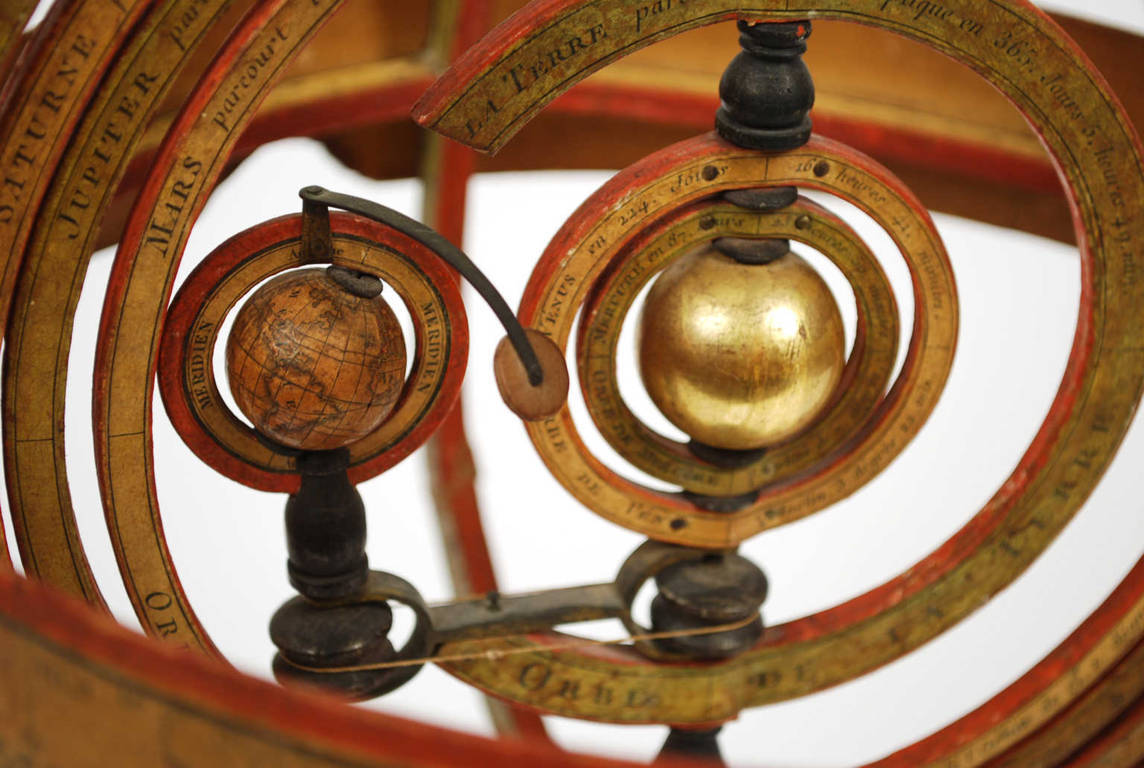antik.it/Antique-measuring-instruments/8076-Sand-Hourglass/
Code 8076
EUR 500.00
In stock
1739976149Code 8076 Sand HourglassSand hourglass, brass container with circular base and blown glass cruet. Height 14 cm (5.5 in) diameter 5 cm (in 2). English manufacture from the 1930s. Good condition. The hourglass is engraved with the Latin motto Navigare Necess est, a famous phrase that has gone down in history and was pronounced, according to Plutarch, by Pompey in front of the soldiers who did not want to embark due to bad weather. Around the year 57 BC, Pompey was tasked with collecting as much grain as possible from all the provinces, to supply Rome during a severe famine. After completing the task and finding an enormous quantity of grain, with the ships loaded with grain and ready to leave, bad weather suddenly arrived with strong winds, the sailors and helmsmen refused to set sail. Pompey, determined and determined, got on the first ship pronouncing the words Navigare Necesse est, Vivere non est Necesse, Sailing is Necessary, Living is not Necessary. His exhortation meant that everyone was at the service of Rome and that it was necessary to bring grain to the starving population even at the risk of their lives. The sailors then obeyed, the ships set sail and arrived in Ostia with a quantity of grain greater than necessary.
The name hourglass derives directly from the original Greek name klepsydra, which literally means steal-water. It was the first instrument for measuring time independent of astronomical observations. One of the oldest specimens was found in the tomb of Pharaoh Amenhotep I, dating back to the 15th century BC. In Greece the use of hourglasses was introduced in 325 BC, in the form of truncated cone-shaped stone containers that released water from a hole in the bottom at a constant rate. Other hourglasses were cylindrical or cup-shaped and were slowly filled by a constant flow of water. Some marks on the internal surface of the container indicated the passage of hours as the liquid level rose. Another version consisted of a metal container with holes in the bottom which, when placed to float in a larger container, sank in a given time. This system remained in use until the 20th century in North Africa. These clocks were generally used during the night, but not during the day, when the more accurate sundials were available.
In the first half of the 3rd century BC. Ctesibius transformed the hourglass into the most complex water clock. By him and others various mechanisms were introduced to increase the precision of the watch by regulating the pressure and maintaining a constant flow of water, but also to offer a better display of the time. The most advanced examples could ring bells or gongs, open windows to show images, or had moving indicators, dials or representations of celestial bodies. Among the designers of clocks of this type were Archimedes and Hero of Alexandria. The Macedonian astronomer Andronicus was responsible for the construction of the Hclockon, known today as the wind tower at the market of Athens, in the first half of the 1st century BC. It is an octagonal tower with depictions of students and people at the market, and bears both a sundial and a mechanical indication of the time. It contains an hourglass mechanism capable of showing all 24 hours, the season of the year as well as astrological dates and periods. It also indicates the direction of the main winds, hence its current name.
FAQ
Do you provide an authenticity certificate/expertise?
Of course! The legislative decree n. 42/2004 stipulates that who sells works of art or historical and archaeological items has the obligation to deliver to the purchaser the documents attesting to the authenticity of the object, or at least to submit the documents relating to the probable attribution and origin. Antik Arte & Scienza provides an expertise (as warranty) that contains a description, period and assignment or the author, if known, of the item.
How can I pay?
Secure payments by PayPal, credit card or bank transfer.
What are the shipping terms and the delivery schedule?
Shipping by DHL or UPS is free (but if we are shipping to a country non-EU remember that any taxes and customs duties are on your expense), and items will be sent just after receiving of payment.
Italy: delivering on the average in 24 h.
Europe: delivering on the average in 2/3 weekdays.
Other countries: delivering on the average in 5 weekdays; custom duties charged to the buyer.
Is shipping insured?
Of course! Free insurance by Lloyd's London that covers almost all destinations.
If I change my mind, can I return the item?
Of course! (see our general terms for more information).
e-Shop
Antique measuring instruments
Code 8076 Sand Hourglass
Antik Arte & Scienza sas di Daniela Giorgi - via S. Giovanni sul Muro 10 20121 Milan (MI) Italy - +39 0286461448 - info@antik.it - www.antik.it - Monday-Saturday: 10am-7pm



















